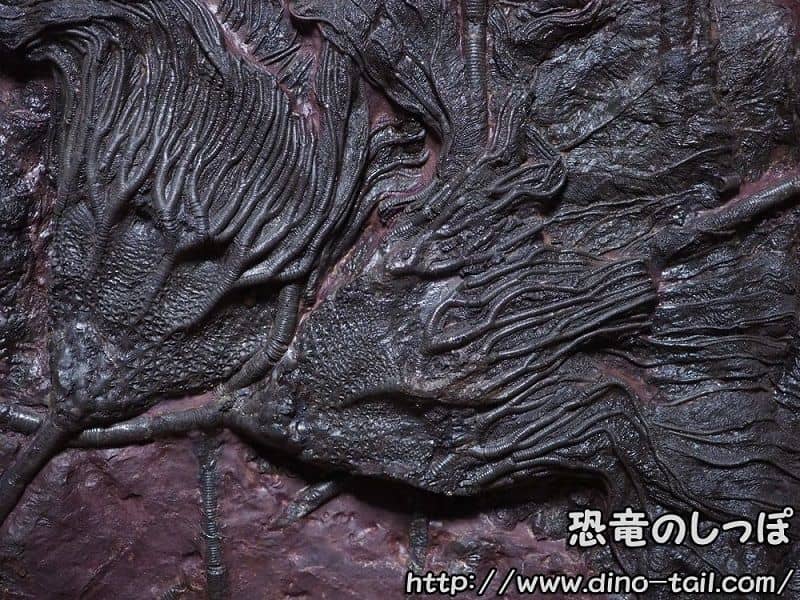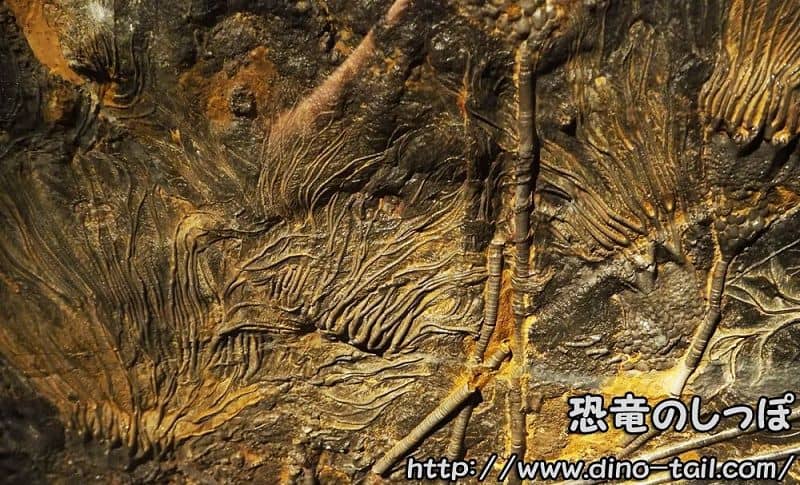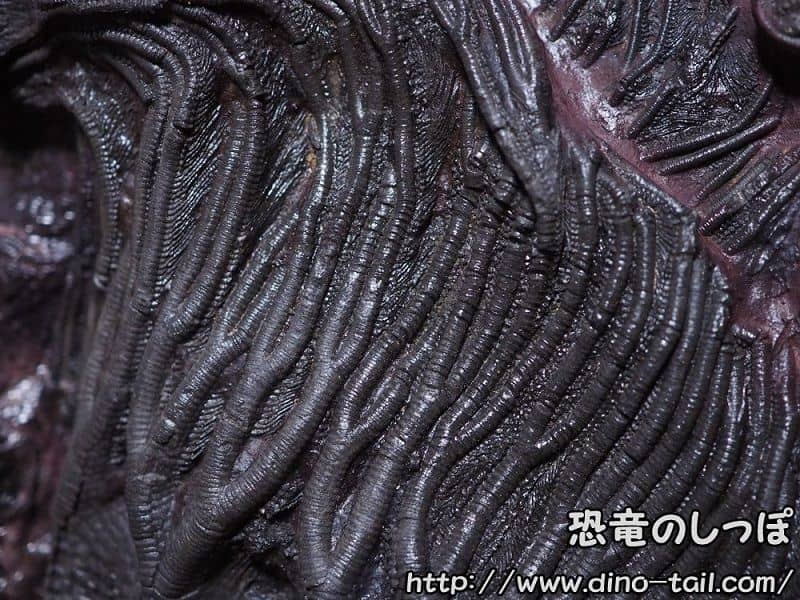About Scyphocrinites (Sea Lily)
| Scientific Name (Genus) | Scyphocrinites |
| Meaning of Name |
Cup lily
skyphos (cup) [Greek] - crinon (lily) [Greek] |
| Classification | Crinoidea, Monobathrida, Scyphocrinitidae |
| Period | Late Silurian - Early Devonian (approx. 416 - 412 million years ago) |
| Sub-classification / Species Name | Scyphocrinites elegans |
| Year of Paper Publication | 1833 |
Features: Evolving Scientific Interpretation
Scyphocrinites is a very interesting sea lily whose ecology has been the subject of scientific debate for over 100 years due to its strange appearance and the state of its fossils. It lived from the late Silurian to the early Devonian (about 416 million to 412 million years ago).
Despite its name, the sea lily is not a plant, but an animal belonging to the phylum Echinodermata, which includes starfish and sea urchins. Today they live in the deep sea, but they were most prosperous in the Paleozoic Era and also inhabited shallow seas. They have a support structure that looks like roots and a stem, and arms (tentacles) that look like petals.
The Great Debate on Ecology: "Floating" or "Rooted"?
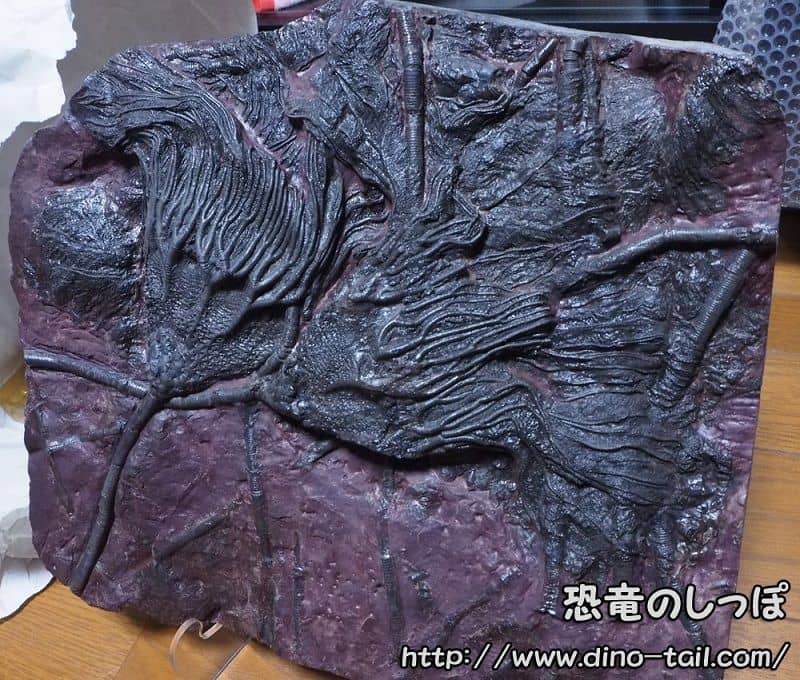
From Morocco, Devonian (about 410 million years ago)
My Collection
- Planktonic Life Theory (Traditional Theory): For many years, the bulbous organ often found in fossils, the "lobolith," was thought to be a "float" for drifting on the sea surface by storing gas inside. In this theory, Scyphocrinites would have hung its flower-like body from the sea surface and filter-fed on plankton.
- Seabed Anchoring Theory (Latest Prevailing Theory): However, recent research has pointed out that this lobolith is too dense to float. Instead, a theory has been proposed that it served as an "anchor" to fix the body in the soft mud of the seabed. In this theory, they would have anchored their bodies to the seabed and extended their long stems to more efficiently capture plankton in the water.
Active debate continues today as to which theory is correct.
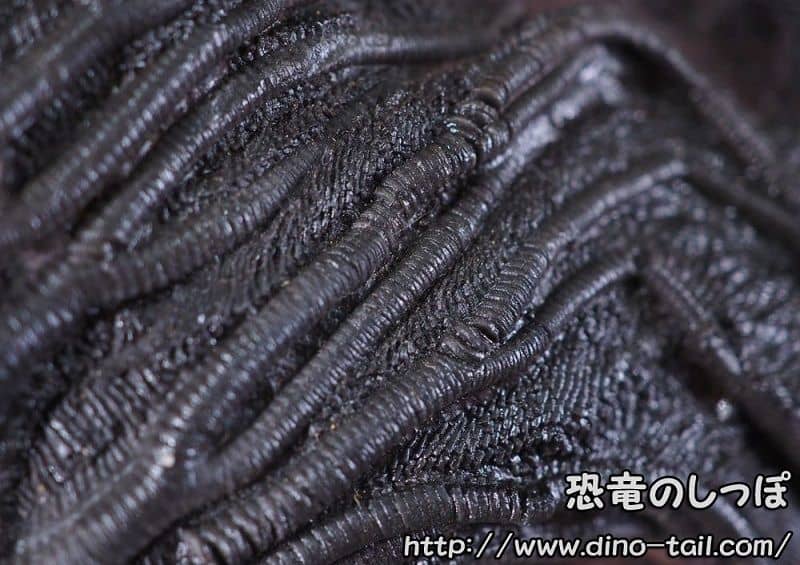
My Collection
Fine, filter-like branches are arranged between the arms. It is famous for producing high-quality fossils from North Africa (Morocco), but it is found over a wide area, including Europe, Asia, and North America.
The "Death Story" Told by Fossils
In places like Morocco, Scyphocrinites are found as huge plate-like fossils with countless individuals clustered together. This is thought to be the result of their colonies (group habitats) being uprooted by natural disasters such as storms and swept at once into the anoxic depths of the seabed to be deposited. Because of the low-oxygen environment, the carcasses were not eaten by other creatures and were miraculously preserved as fossils in their beautiful state.
Scyphocrinites Stamp and Fossil Gallery
